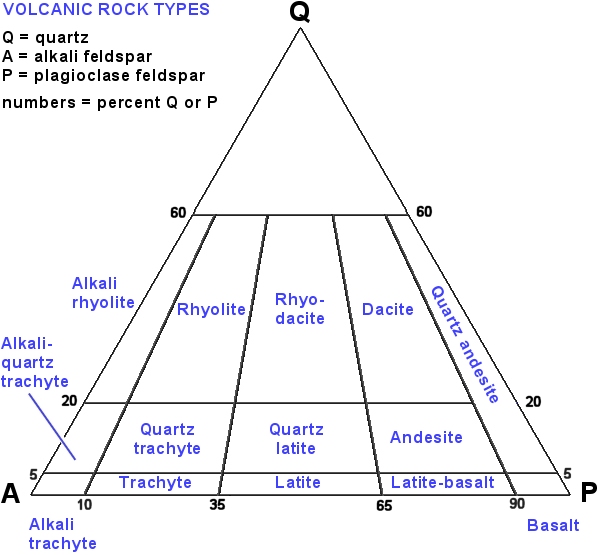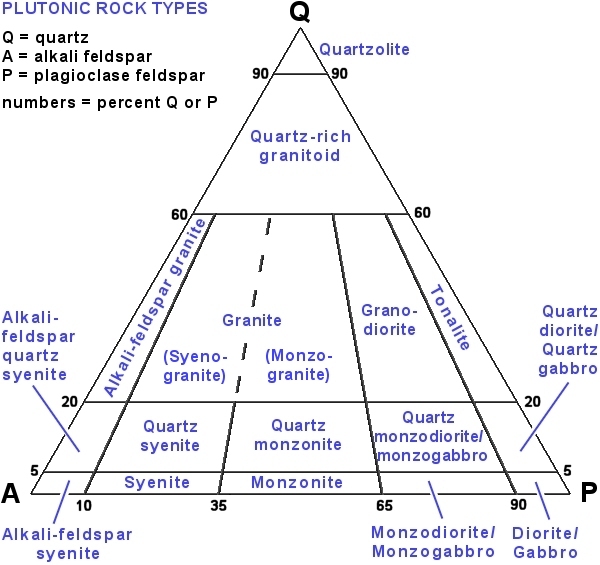How are granite and rhyolite the same, and how do they differ?
1 Answer
One is intrusive and the other is extrusive.
Explanation:
So I'm going to make a general comment and say that a granite is genetically the same (has the same composition) as a rhyolite. Please don't take this as always true but it is a close enough estimate in most cases.
So if we assume the above to be true then the only difference between the rocks is that one is plutonic and the other is volcanic.
A plutonic igneous rock is one that crystallises deep in the crust (can be 10s of kilometres deep). They are characterised by large crystals which we term coarse-grained. Another term for this type of rock is an intrusive rock. A granite is this.
The other type is called an extrusive igneous rock and is one that breaks through to the surface to crystallise on or near the Earth's surface resulting in a fine-grained rock. A rhyolite is this and is usually erupted onto Earth's surface.
So if we look at the Quartz-Alkali-Plagioclase (QAP) ternary diagram you can see that granite and rhyolite sit in similar positions. The difference is that granite sits on the plutonic diagram and rhyolite sits on the volcanic diagram. So they have a similar composition but one is volcanic and the other is plutonic.


Summary:
- Granite is plutonic and rhyolite is volcanic.
- They have very similar compositions but one is erupted onto Earth's surface and the other crystallises at depth.
- As a result, plutonic rocks are coarse-grained and volcanic rocks are fine-grained.


